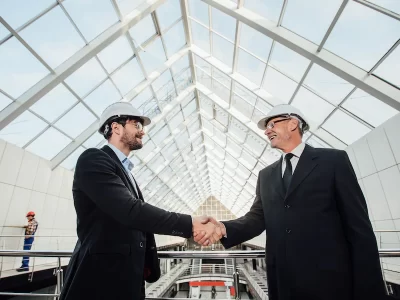The picturesque city of Christchurch, nestled on New Zealand’s South Island, is no stranger to adversity. Over the years, it has faced its fair share of challenges, with earthquakes being a significant recurring threat. However, the resilient spirit of the city and its inhabitants has consistently driven Christchurch to rebuild and evolve.
In the wake of these natural disasters, sustainable architecture has emerged as a vital component of Christchurch’s rebuilding efforts, not only to ensure structural resilience but also to create a more environmentally friendly and aesthetically appealing urban landscape.
Contents
Sustainability In Context:
Earthquake Resilience And Sustainability:
The history of Christchurch is marked by several devastating earthquakes, most notably the 2010 and 2011 earthquakes that caused widespread destruction. In response, sustainable architecture has become a key focus in rebuilding efforts. Sustainable designs incorporate earthquake-resistant materials and techniques, reducing the risk of structural damage during seismic events. This focus on resilience is crucial for safeguarding both lives and property.
Environmental Stewardship:
Christchurch recognizes the importance of environmental conservation, and sustainable architecture plays a pivotal role in minimizing the city’s carbon footprint. Sustainable buildings are designed to be energy-efficient, using renewable energy sources and efficient insulation. This not only reduces the city’s contribution to climate change but also lowers energy costs for residents and businesses.
Sustainable Architecture Principles:
Incorporation Of Natural Elements:
One of the hallmarks of sustainable architecture Christchurch is the incorporation of natural elements into building designs. This includes utilizing natural light and ventilation to reduce the need for artificial lighting and air conditioning. The Christchurch Central Library, for example, features a stunning design that maximizes natural light, creating an inviting and energy-efficient space for residents and visitors.
Adaptive Reuse Of Buildings:
Sustainability isn’t just about new construction; it also involves the preservation and adaptive reuse of existing buildings. Christchurch has embraced this principle by repurposing historic structures damaged by earthquakes. The Arts Centre, a magnificent complex of Gothic Revival buildings, is a shining example of adaptive reuse, breathing new life into heritage architecture while reducing waste and conserving resources.
Innovative Sustainable Projects:
The Terrace Development:
The Terrace is a cutting-edge sustainable development in the heart of Christchurch. This mixed-use precinct combines residential, commercial, and retail spaces with a focus on eco-friendly design. Solar panels, rainwater harvesting, and green roofs are just a few of the sustainability features that make The Terrace a model for future urban developments in the city.
Read Also: Modern Real Estate: Best Trends And Innovations In The Property Market
Ōtākaro Avon River Precinct:
The Ōtākaro Avon River Precinct project exemplifies Christchurch’s commitment to creating a sustainable and vibrant urban environment. This riverfront revitalization project not only enhances the city’s natural beauty but also incorporates sustainable practices such as native plantings, stormwater management, and pedestrian-friendly pathways.
Benefits Of Sustainable Architecture:
Enhanced Quality Of Life:
Sustainable architecture isn’t just about saving the planet; it’s also about improving the quality of life for Christchurch’s residents. Buildings designed with sustainability in mind provide healthier indoor environments, better air quality, and more comfortable living spaces.
Economic Advantages:
Sustainable buildings often have lower operating costs due to reduced energy consumption. Additionally, they tend to have higher property values, making them attractive investments for homeowners and businesses alike.
Community Engagement:
Sustainable architecture fosters community engagement and pride. It encourages residents to take an active interest in their city’s development and promotes a sense of ownership and stewardship.
Challenges And Future Directions:
While Christchurch has made significant strides in embracing sustainable architecture, challenges remain. These include the need for widespread adoption of sustainable practices, ensuring affordability, and addressing the complexities of retrofitting existing buildings. Looking ahead, Christchurch’s commitment to sustainability remains strong. The city continues to invest in research and development to push the boundaries of sustainable design. As new technologies emerge and public awareness grows, sustainable architecture will play an even more prominent role in shaping the future of this resilient city.
Conclusion:
In the face of adversity, Christchurch has emerged as a global leader in sustainable architecture. Through earthquake-resilient designs, environmental stewardship, and innovative projects, the city is not only rebuilding but also reimagining its urban landscape. Sustainable architecture isn’t just a trend in Christchurch; it’s a fundamental pillar of the city’s identity, reflecting its determination to thrive while preserving the natural beauty that makes it a unique and vibrant place to call home. As Christchurch continues to rise from the ashes, sustainable architecture will remain at the forefront of its rebuilding efforts, serving as a beacon of hope and inspiration for cities around the world facing similar challenges.
Also read:












